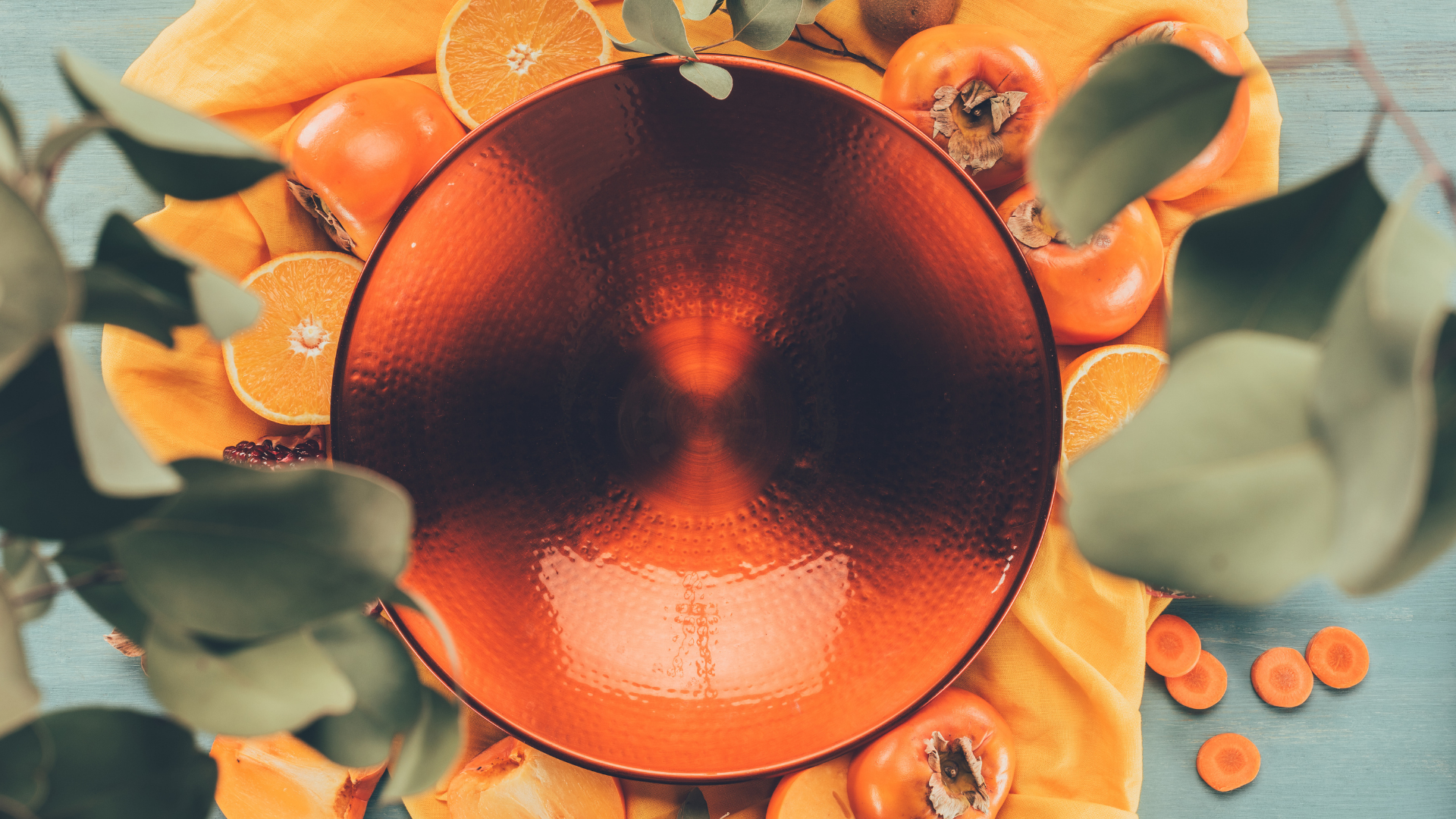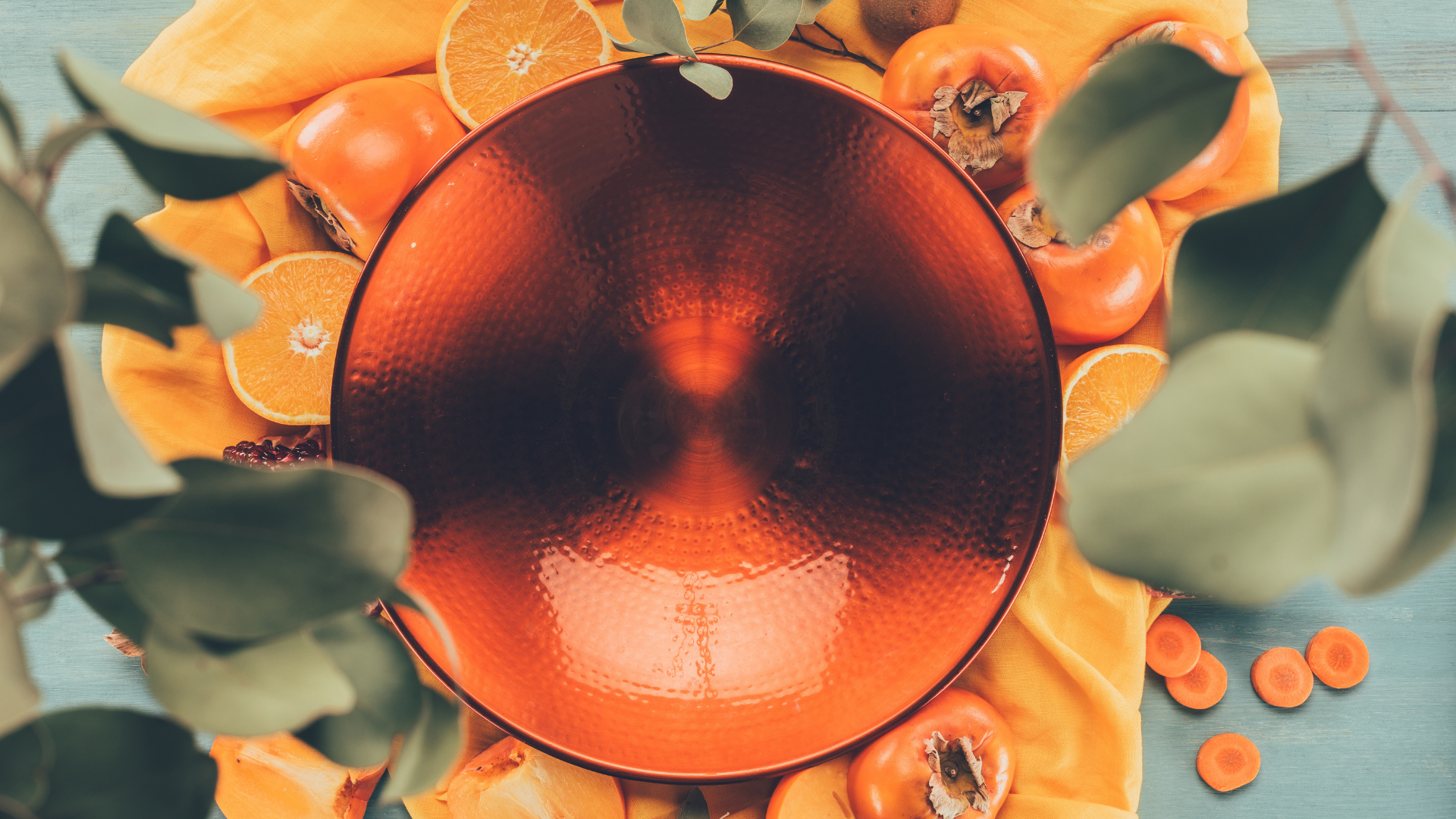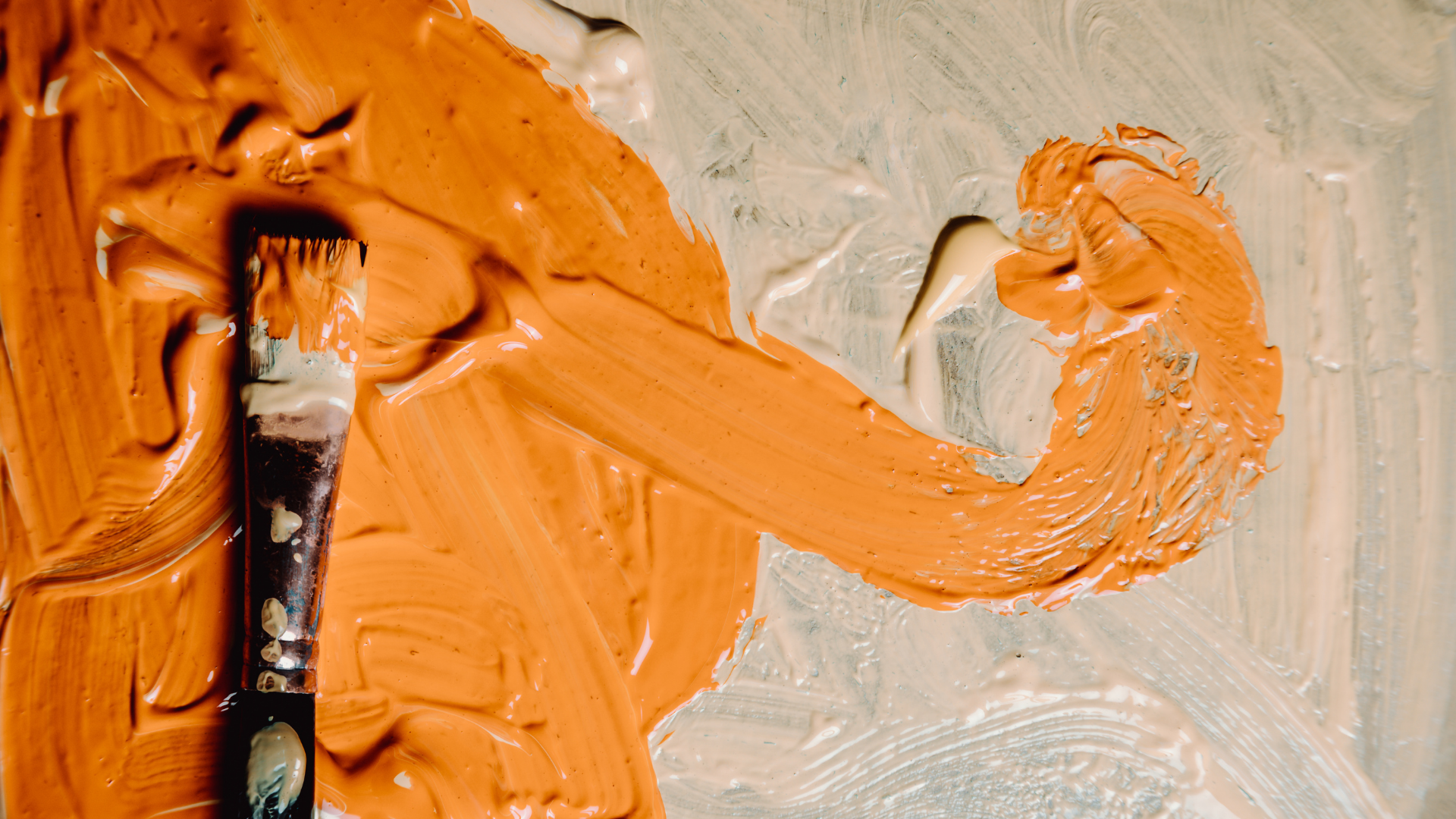The Meaning of the Color Orange: Its Energy and Happiness Effects
28 March 2025
The Meaning of the Color Orange: Its Energy and Happiness Effects
Orange is a warm, intermediate color created by mixing red and yellow. Thanks to this blend, it carries the energy of red and the cheerfulness of yellow, radiating warmth and happiness wherever it appears. With its vibrant and brilliant appearance, orange has an uplifting effect on people, often evoking feelings of optimism and joy. It is generally known as a lively, positive color that infuses any space with an energetic atmosphere. Additionally, orange is also recognized as the color of adventure and social interaction. When we see orange, we tend to associate it with an energetic, outgoing, and talkative environment. Even in difficult times, the positive tone of orange can boost morale by dispelling feelings of despair and increasing motivation. In short, orange is a color that energizes, brings joy, and revitalizes those around it.
KEY TAKEAWAYS
- What is the Color Orange? A warm hue created by blending red and yellow, symbolizing energy and happiness.
- Psychological Effects of Orange: Boosts vitality, motivation, social interaction, optimism, and courage.
- Cultural Significance of Orange: Represents autumn and Halloween in the West, while in the East, it is linked to spiritual purity and Buddhist monks.
- Orange and Astrology: Strongly resonates with Aries, Gemini, and Leo signs.
- Orange in Fashion: Creates a bold and energetic style, drawing attention and reflecting confidence.
- Orange in Art: Frequently used by artists like Van Gogh and Cézanne, often contrasted with blue for visual impact.
- Orange in Branding: Represents dynamism and positivity, making it a popular choice for logos and packaging.
Which Emotions Does the Color Orange Represent?
Orange is generally associated with positive emotions. It gives a warm and pleasant feeling. Here are the primary emotions represented by the color orange:
- Joy and Happiness: Orange activates feelings of joy and happiness. Its invigorating effect can impart a sense of delight and liveliness, making environments appear more fun and positive.
- Optimism: One of the fundamental emotions that orange evokes is optimism. It symbolizes a hopeful outlook and represents staying positive even in the face of challenges. People who favor orange often tend to look at life with hope and positivity.
- Energy and Excitement: Orange represents high energy, excitement, and enthusiasm. It can ignite our inner zest for life. That’s why orange is frequently used in parties and festivals, evoking feelings of excitement and dynamism.
- Warmth and Sincerity: Being a warm tone, orange creates an effect similar to the colors of a sunset, evoking inner warmth. It can represent sincerity, closeness, and friendship. An orange environment typically feels welcoming and hospitable.
- Success and Courage: In many cultures, orange symbolizes success and courage. Particularly, the orange tones that border on golden hues can represent the path to victory and determination.
However, there are also some negative associations with orange:
- Superficiality: Some studies indicate that certain individuals may perceive orange as superficial or lacking in seriousness. Due to its bright and playful nature, it can sometimes give the impression of lacking depth. For instance, wearing a bright orange outfit in a corporate meeting might contradict the formality of the setting.
- Melancholy and Autumnal Sadness: Interestingly, orange does not always bring joy; especially in autumn when orange leaves fall, it can evoke a slight sense of melancholy. In Western cultures, orange is sometimes associated with the season’s end and the decay of autumn, leading to a somewhat somber or “closing” feeling. For example, during Halloween, orange pumpkins symbolize both fun and the somber side of autumn.
The Historical Role and Importance of the Color Orange
The history of the color orange is intriguing both linguistically and culturally. First, if we look at the origin of the word “orange” in our language, it comes from Persian. The word is derived from “turunç” (bitter orange), meaning that the fruit originally gave its name to the color. Although older terms like “kavuniçi” existed in Turkish, today the term “turuncu” is commonly used.
There have been several notable periods and fields in history where orange gained significance. In art history, for instance, the use and production of orange pigment increased over time. During the Renaissance and later, painters achieved orange tones by mixing red and yellow; however, the search for a purer and brighter orange pigment was ongoing. By the 19th century, with the discovery of synthetic pigments, orange found an easier place on the painter’s palette. Impressionist painters, in particular, highly valued orange; renowned artists like Vincent van Gogh and Paul Cézanne are among those who frequently used orange in their works. These artists, seeking to capture the liveliness of sunlight and nature, brought their paintings to life with bright orange tones.
Throughout history, orange has also acquired symbolic meanings in various societies. For example, since the 16th century, orange has been the national color of the Netherlands. During royal celebrations or national holidays in the Netherlands, the streets and people are adorned in orange. Additionally, in religious and spiritual contexts, orange holds great significance. In many Asian cultures, a shade of orange known as saffron is considered sacred. The saffron-colored robes worn by Buddhist monks for thousands of years symbolize simplicity and the renunciation of worldly desires. This tradition, dating back to the time of the Buddha, continues as monks still use natural dyes like turmeric and saffron to obtain the color. Thus, orange has also come to represent a move away from worldly splendor toward spirituality.
The Meaning of Orange Across Cultures
The significance of orange can vary greatly from one culture to another. Here are some of the symbolic meanings attributed to orange around the world:
- Western Cultures: In the Western world, orange is first associated with the autumn season. Particularly in North America, orange represents the falling autumn leaves and is a prominent color during Halloween. Pumpkins, candlelight, and orange-black decorations reflect both the cheerful and slightly eerie aspects of the color. In the United States, orange is thus often linked with autumn and harvest time.
- Eastern Cultures: In the East, orange has a more spiritual and sacred connotation. In religions such as Buddhism and Hinduism, especially in saffron shades, orange symbolizes sanctity, purification, and self-sacrifice. For instance, in India and many Southeast Asian countries, monks wear orange or saffron robes; these garments signify renunciation of worldly life, humility, and the pursuit of spiritual enlightenment.
- National and Local Cultures: In some countries, orange has taken on national or local significance. As mentioned earlier, orange is the national color of the Netherlands and a symbol of national pride linked to the Royal Family. In Japan, orange can sometimes be found in Shinto symbols that represent courage and love, while in the Middle East, orange is associated with spring and fertility, often connected to orange blossoms. In Turkey, orange, reminiscent of autumn and winter fruits (oranges, tangerines), evokes feelings of warmth and health. Although it is not an overwhelmingly dominant symbol in traditional Turkish culture, orange has occasionally been seen in Ottoman palace garments.

The Spiritual and Metaphysical Aspects of Orange
Orange is significant not only for its psychological effects but also on a spiritual and metaphysical level. Many alternative belief systems and energy practices attach special meaning to orange. Its spiritual messages and effects can be summarized as follows:
- Renewal and Spiritual Awakening: Orange imparts a sense of rebirth and renewal. The orange hues visible at sunrise and sunset symbolize the beginning and end of a cycle. Hence, orange is often interpreted as the color of moving from darkness to light—a symbol of spiritual awakening.
- Emotional Healing and Energy: In alternative therapies and metaphysical practices, orange is considered to have a healing frequency. In color therapy (chromotherapy), orange is used to treat emotional imbalances such as depression and unhappiness.
- Vibrations of Warmth and Vitality: Spiritually, orange is thought to resonate closely with the “fire” element. Just as it provides physical warmth, on a spiritual level it represents a comforting, revitalizing energy. It is said that having an orange object in a meditation space can add warmth and a sense of security to the environment.
- Balance and Freedom: On a spiritual plane, orange also carries themes of freedom and self-expression. Its energy encourages one to be true to oneself and express oneself freely, awakening the inner creative child and liberating the spirit.

Orange in Art
Artists who skillfully use the language of colors have frequently taken advantage of orange’s striking impact. Particularly in Impressionism, orange became critical for reflecting natural light and atmosphere. For example, the celebrated painter Vincent van Gogh is known for his extensive use of orange and yellow in his works. In masterpieces such as “Sunflowers” and “The Starry Night,” the orange hues evoke the warmth of sunlight and the ambiance of a vibrant summer day. Similarly, another Impressionist, Paul Cézanne, utilized the rich tones of orange in landscapes and fruit still-lifes, adding depth to his paintings. The frequent recourse to orange by these masters underscores how important the color was for artists of that era.
When discussing orange in art, it is also essential to consider the concept of complementary colors. In color theory, blue is the complementary color to orange. Many painters and designers have exploited the strong contrast between blue and orange. For instance, in cinema and digital art, the “orange & teal” color palette is widely used; orange skin tones contrasted with teal (blue-green) backgrounds create visual interest. In painting, an orange horizon or object against a blue sky is highly pleasing to the eye, enhancing both the brightness and the depth of the artwork.
Orange and Astrology: Which Zodiac Signs Are Compatible?
In astrology, each zodiac sign is associated with certain colors that complement its energy. The color orange is identified with specific zodiac signs that it harmonizes with, primarily those in the fire element and some air signs. Here are the zodiac signs most compatible with orange and the reasons why:
- Aries (March 21 – April 20): Aries is known for its energetic, passionate, and courageous nature. Although red is a dominant color for Aries, orange is also an excellent match as it represents the sign’s inexhaustible energy and enterprising spirit. Aries individuals, who tend to love standing out and leading, are complemented well by a vibrant shade of orange.
- Gemini (May 21 – June 21): Geminis are known for their cheerful, curious, and dynamic nature. Constantly in search of new information and experiences, Geminis find orange to be an energizing force—a true source of vitality. When combined with yellow or pink, orange is one of the most harmonious colors for Gemini.
- Leo (July 23 – August 22): Leo is one of the most confident and flamboyant signs of the zodiac. Ruled by the sun, Leos shine brightest in colors like gold, red, and orange. The color orange highlights Leo’s natural charisma and warm heart, while also nurturing the sign’s creative and generous spirit.
While anyone can wear orange and benefit from its energy, astrologically speaking, the above signs tend to feel its positive effects most strongly.
Orange in Fashion
In the fashion world, the language of color is very important, and orange has experienced a veritable renaissance in recent years. Thanks to its vibrancy and ability to capture attention, orange carries a unique meaning in fashion. First and foremost, orange represents boldness and originality. Unlike safe colors like black, white, or navy, wearing orange is a daring statement; it shows that the wearer is unafraid to stand out and express their energy. Consequently, fashion experts describe orange as a color that exudes confidence and dynamism.
Since the 1990s, orange has also become popular in the world of high fashion (haute couture). Renowned fashion houses and designers have increasingly incorporated orange into their collections. For example, an orange evening gown offers a modern and striking statement compared to more conventional colors. Models sporting bright orange outfits on the runway convey a powerful and energetic image. Over time, this trend has also influenced street fashion—orange jackets, shoes, and bags are now common accessories in daily wear. The fashion industry positions orange as a youthful, energetic, and innovative color.
From a branding and marketing perspective, many brands leverage the positive and approachable image of orange. Especially in sectors such as food, technology, and sports, logos or store designs that incorporate orange aim to leave a warm and memorable impression on customers. Products with orange packaging tend to be more eye-catching and playful on the shelves, drawing consumer attention and interest.
What Does Wearing Orange Mean? Outfit Suggestions
After discussing orange’s role in the language of fashion, let’s focus on its impact on personal style: What does wearing orange signify, and what impression does it leave on others? First of all, wearing orange sends a message of strong confidence and extroversion. People who include orange in their wardrobe are generally perceived as lively, warm-hearted, and sociable. Choosing this vibrant color indicates that one is not interested in hiding their true self; rather, they are eager to radiate their energy to the world.
Wearing orange has a significant effect on one’s style, as it reflects happiness and liveliness. When you wear an orange piece, it not only affects you but also leaves a positive impression on those who see it. Studies suggest that wearing orange on a first date can instill a sense of trust in the other person and reduce tension, allowing the conversation to flow more easily.
This demonstrates the comforting and relaxing effect of orange. Its warm hue softens the environment and brings out positive emotions in people.
Moreover, orange exudes excitement and dynamism. Wearing an orange T-shirt during sports or adding an orange accessory to your morning outfit can boost your mood and send an energetic message to your colleagues. Orange is one of the simplest ways to break monotony—a scarf or bag in orange can instantly enliven your entire look.
Of course, balance in personal style is key. Since orange is a very dominant color, wearing it head-to-toe might not suit everyone. If you’re new to incorporating orange into your style, it is advisable to start with small accessories—such as an orange watch strap, bag, or shoes—to add a touch of color to your outfit. As you become more comfortable with the color, you can experiment with larger pieces like an orange jacket. Trying different shades is also important; those with lighter skin tones might opt for peachy hues, while individuals with wheatish or darker skin tones might prefer bright or burnt orange shades.
In summary, wearing orange is a reflection of a positive outlook on life and a bold style. The orange accents in your outfit can make you both stylish and memorable. If you wish to convey a message of energy, happiness, and reliability through your appearance, be sure to give orange a chance in your wardrobe. Remember, fashion is an art form that reflects our individuality, and if you carry a sun-like energy within you, wearing orange is a fantastic way to showcase it to the world.



